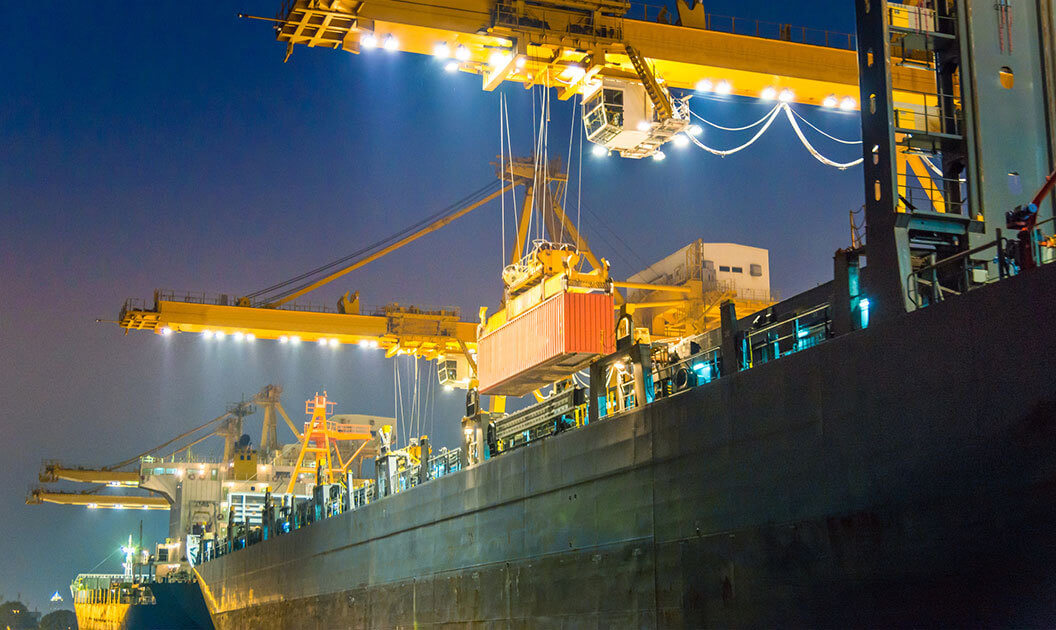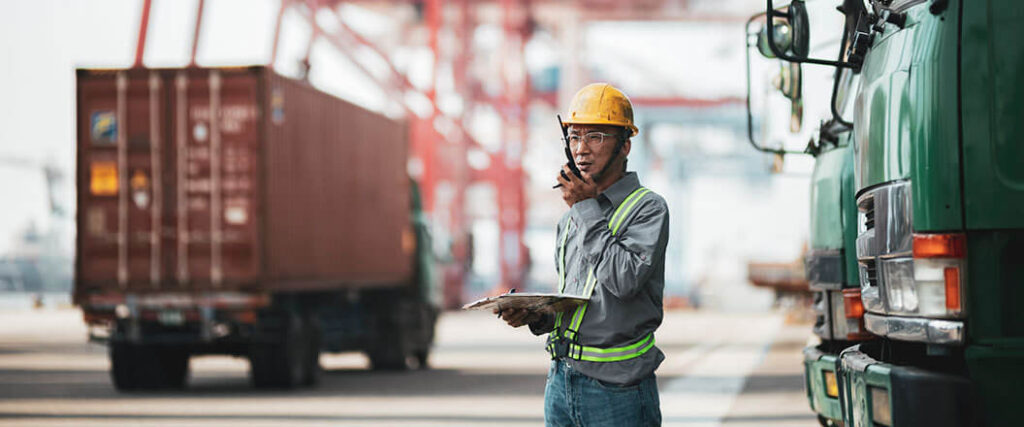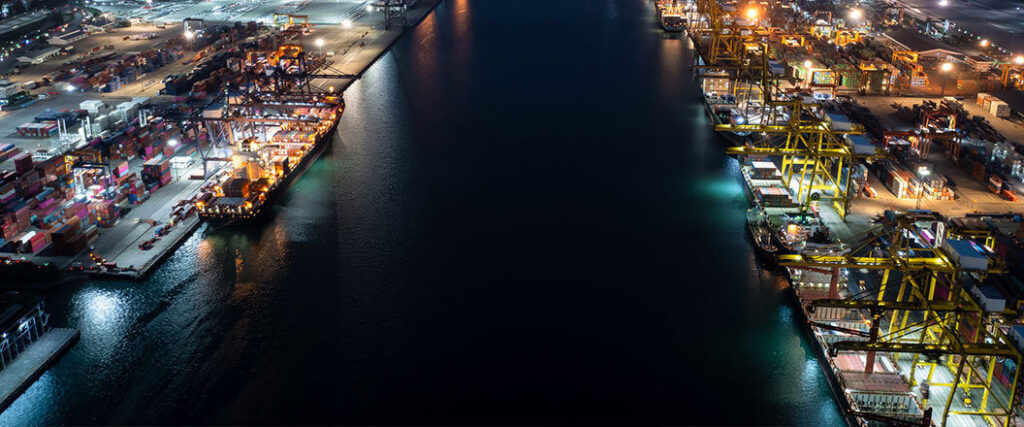
The ocean freight forwarding process is the backbone of international trade. At hundreds of ports around the world, thousands of businesses have expanded their customer base by sending or acquiring products from foreign nations. An internationally streamlined ocean shipment process makes this possible at a logistical level.
The International Federation of Freight Forwarders Association (FIATA) has worked to create standard processes to facilitate global trade. The success of widespread ocean freight is a result of the standardization of required documents, export and import handling, and the use of trained and experienced freight forwarders.
Become familiar with each stage of the ocean freight forwarding process and see how freight forwarders can help your business expand internationally.

Shipping freight internationally for the first time is a big step for businesses. It represents a big investment, so understanding the process as a whole is important for your budget team and for your peace of mind.
The process begins once you have products to ship as freight to or from the United States. At each stage, there are important decisions to make and official documents that need to be signed off on. Commodities that are highly regulated or have special shipping and handling needs can further complicate the process.
This is where the services of a freight forwarder become necessary. With their help, your freight can move through each stage of the process.

How do you set out to hire a freight forwarder? How do you know you’re working with an organization that is qualified to manage your shipment?
First, you need to know that freight forwarders, like many branches of the shipping industry, have unique specialties.
Common specialties include:
For international shipping, especially when using container ships, you want to hire an ocean freight forwarding service.
Secondly, you will get what you pay for. A low-cost forwarding service may not have the extensive support network needed to handle regulated products or have the connections to get you the best deals on shipping rates.
Whether directly or because they work with an extensive network of partners, a good freight forwarder will have the technology, personnel, and know-how to ship your products in a way that adds value to your business.
An ocean freight forwarder may or may not be classified as a Non-Vessel Operating Common Carrier (NVOCC). There are some differences between the two, mostly related to the actual booking and cargo loading processes.
If you have an experienced ocean freight forwarder on your side, the next stages of the process are simple.
Once an order is completed, the necessary arrangements are made to get it from the manufacturer’s warehouse or production facility to the port. Export haulage is the process of using local carriers to transport goods from their original source to a warehouse managed by a freight forwarder.
Most freight forwarders will have warehouse storage near ports. They use local drayage services to transport them the short distance once the ship is ready to begin loading cargo.
Forwarders will normally not take goods directly to the port for a number of reasons.
You should be aware that not all freight forwarders handle export haulage services. It comes down to the contract agreement you have with the forwarder and the Incoterms you have agreed to.
A consignee that agrees to take responsibility for a product as soon as it leaves the manufacturer or distributor, is financially responsible for the export haulage arrangements.
If there is an agreement to take full possession at any other point in the shipping process, then a shipper can make the necessary arrangements and choose the services of a freight forwarder.
This benefits the consignee because it puts the arrangements in the hands of people who are more familiar with the available transportation services. It also provides some financial protection in the event that goods are damaged during the initial transit stage. Loss and damage fall under the shipper and forwarder’s legal liability at that point.
Whoever ends up actually arranging the transport, the destination is still a warehouse near the port where the next stage of the ocean freight forwarding process continues.

Before products can leave a country, export customs officials need to clear them. Export processes differ slightly from nation to nation but thanks to FIATA, most of the differences have more to do with the products.
The adoption of Electronic Data Interchange (EDI) systems has made this process easier because all necessary documents are sent digitally. Documents for export are submitted as Electronic Export Information (EEI).
Freight forwarders, or a customs brokerage service if necessary, should submit the following documents to export officials:
Obtaining all of the certificates and documents requires clear communication between the shipper and freight forwarder. The benefit of working with a freight forwarder to get them, especially ones that have embraced the latest technologies, is that you know a clear record is maintained.
While the paperwork for export clearance is being taken care of, arrangements with the ocean carrier can begin.

Choosing an ocean carrier service tends to come down more to availability and offered services rather than company preference. Granted, the larger shipping lines, such as Maersk and MSC, are likely to offer the widest variety of routes and services.
However, depending on the geographic location of your products and the port of departure, your shipment may need to travel on a couple of ships before reaching the destination country.
Products shipping out of smaller ports in Southeast Asia or Oceania might need to pass through transshipment hubs where containers are transferred from smaller ships into larger vessels destined for major ports like Los Angeles on the West Coast or Savannah on the East Coast.
You may also want your products to stay in a smaller vessel that can call to ports with less congestion. Your chosen shipping line transports your freight in an agreement called a contract of carriage. The contract is between the shipping line and the NVOCC or freight forwarder.
For more details, check out our article NVOCC vs Freight Forwarder: Two Reliable Solutions
Either way, your cargo is likely to end up on one of the larger steamship lines simply because they control so much of the marine shipping market share. The top five companies alone control nearly 65% of the total market share.
| Operating Line | Percentage of Market Share |
| Mediterranean Shipping Company (MSC) | 17.4% |
| Maersk | 16.5% |
| CMA CGM Group | 12.9% |
| COSCO Group | 11.2% |
| Hapag-Lloyd | 6.8% |
Be upfront with your freight forwarder about your shipping needs. When freight forwarders know all the details, they are better able to negotiate rates, insurance costs, and other matters.
Factors that affect carrier selection may include:
Once shipping arrangements are settled, the carrier itself will handle the rest of the origin handling procedures. If your freight forwarding service is an NVOCC, this can include aspects of export haulage.
Another option for ocean freight besides container ships are barges. Barge transport is common when crossing smooth gulf water or inland waterways.
Origin handling can include all the arrangements needed to transfer cargo from the seller to a warehouse, and then onboard the container ship with all necessary documentation. The costs of origin handling will depend on the agreement between the shipper and consignee or between the shipper and the freight forwarder.
As with export haulage, the agreed-upon Incoterms affect the financial responsibilities of each party. Which one most benefits you may vary by shipment.

To accept cargo for transport, ocean carriers require another set of documents. Many are the same documents that were submitted to export customs.
These include:
With an NVOCC, these documents are often submitted as the export clearance process is taking place. The steps of the ocean freight forwarding process aren’t isolated and many things are taken care of at the same time when possible.
Documentation unique to sea freight is needed, however, and includes:
For the actual shipping process, the carrier bills the freight forwarding company. Processes like this, which are done through the forwarder or NVOCC, become part of the final invoice you agree to pay the forwarding service.
Once everything is on board and accounted for, the carrier issues a Bill of Lading (BoL). This is your receipt and serves as proof that the listed cargo is on board. When a carrier submits a BoL to the shipper or a freight forwarder directly, it’s known as a Master Bill of Lading.
NVOCCs are authorized to issue their BoLs to you, their customer, after receiving the master BoL from the steamline company. The BoL you receive from an NVOCC is called a House Bill of Lading.
With the BoL in hand, the next stage of the process can begin – customs clearance at the destination country.
Need to ship something too big for a container? Check out our article on break bulk shipping.
Import customs clearance in the U.S. is complicated if you leave things until the ship pulls into port. This is where the slower delivery speed of ocean freight works in your favor.
In the weeks your shipment is in transit, you can have your freight forwarder or a customs broker begin the import clearance process for you. You will actually have all the necessary documentation at the time the ship leaves the exporting country.
Advance submission of paperwork eases the physical inspection process once the goods are unloaded at the port of destination. Any taxes and duties are paid and your cargo is free to leave. At that point, your contract with your NVOCC might end if it’s a service that only manages the process until arrival.

You have the option to arrange transport out of the port yourself or use the services of a domestic freight forwarder to do so. If you’ve been working with an international freight forwarder that handles export, ocean, and import processes, you just need to let them pick up where the customs broker left off.
Final arrival and import haulage, sometimes referred to as destination handling, starts when the ship arrives at port and the needed documents to move the container off the ship and to its final destination are put into play.
Drayage services can take the container to a local warehouse for unpacking and sorting. Shipping can also be arranged for the products to go directly to the consignee if different from the shipper. The unloaded product should be checked against the BoL to make sure that everything made it through the journey in the same shape and quantities in which it left.
Once the final deliveries are made, the ocean freight forwarding process is officially complete.
Want to know more about freight forwarding in logistics? Read our article to learn more.

Take the stress out of international shipping and let USA Freight Forwarding Services ride the waves for you. With so many moving parts to the ocean freight forwarding process, you want to avoid taking time and effort away from your real responsibility – running a successful business.
Outsource your shipping arrangement needs and find a partner that will help you raise the value of your business by making sure you’ve got the time to run it.
USA Freight Forwarding Services works with ocean and air cargo carriers all over the world. Not sure if ocean freight is your best option? Schedule a 1-on-1 consultation with one of our experienced freight forwarding representatives.
No matter what type of freight you’re shipping, we can offer the following services:
Give us a call today at (866) 941-8081 to schedule your consultation or secure a service quote directly online. Your best business partner is just a click away.